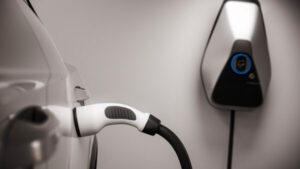Selecting a High-Performance Alternator for Your Boat
Whether you are seeking to replace your factory installed alternator or upgrade to a higher-capacity model, then you are at the right place. This article will go a long way in helping you shop for the correct high-performance alternator for your boat.
Before making an expensive investment, save yourself a lot of trouble by ensuring you purchase the appropriate system for your needs. Charging systems depend on the boat, engine type and room space, battery size and chemistry, and belt size and type.
The selection criteria should include the following;-
Battery Capacity
Deep cycle flooded battery, flooded starting battery, and absorbed glass mat (AGM) battery are the most common marine batteries. Each comes with its unique charging feature, which influences the size and type of alternator you will need.
Whether of the deep cycle or starting type, a regular flooded battery accepts charging current up to 25% of its capacity. In contrast, gel batteries take up to 30%, and AGM batteries accept 40% to 50%.
Newer designs such as lithium-ion can accept even higher. Such models require large or extra-large case alternators to generate adequate charging current to feed their unlimited appetite for amps.
Always ensure your alternators can deliver output equal to the highest acceptance rate of your current battery.
Battery Chemistry
The more electronic appliances you connect to your boat, the higher the power demand. As a result, most people start shopping for larger batteries or toy with the idea of adding extra batteries. Consequently, your charging system needs to be reviewed.
Ideally, your alternator’s output should be similar to your battery’s maximum available capacity. For example, if you own flooded batteries with a total of 400amp, the maximum available capacity would be 25% or 100amps. Thus, your alternators should be rated at 100amps.
Similar calculations apply with other battery types and their respective capacities.
Belt Load Requirements
The width of your drive belt is a crucial factor when choosing a replacement alternator. Commonly used belt types – vee and multi-groove serpentine belts – come with specific amperage and horsepower load they can handle.
As a general rule, 12-volt alternators have a 25:1 output to horsepower ratio. Therefore, you will need to size the alternator in comparison to the capacity of its drive belt. Failure to do will lead to belt slippage, hastened belt wear, and damage to your engine and alternator.
Mounting Design
Mounting compatibility depends on the engine type, year, compartment layout, and several other factors. You will need to inspect the existing mount and compare it to the diagrams shown. This way, you can determine the most appropriate alternator replacement.
In some instances, you will require tensioners, wiring, spacers, or modifications to brackets. A majority of alternators fall into any of the following commonly applied mounting styles;-
- Single 1” Foot Spindle Mount
- Single 2” Foot Spindle Mount
- 15” ID Saddle Mount
- 4” ID Saddle Mount
Conclusion
High output alternators are crucial on boats as they let you connect as many electrical appliances as possible, including floodlights, satellites, subwoofers, and refrigerators. Ensure you know what you are looking for to ensure you make the right purchase for your needs.





